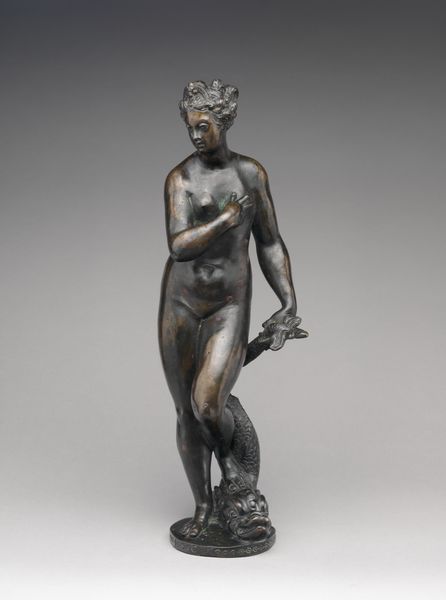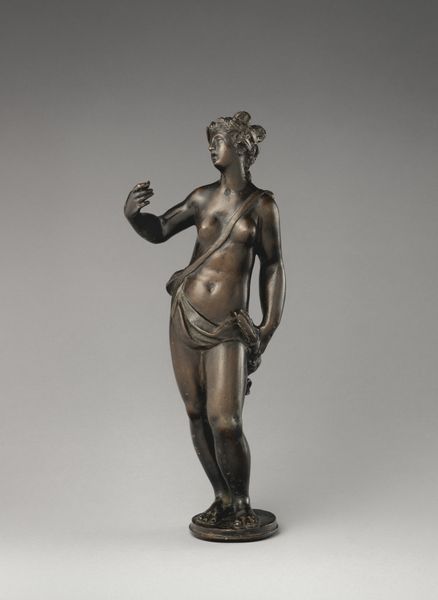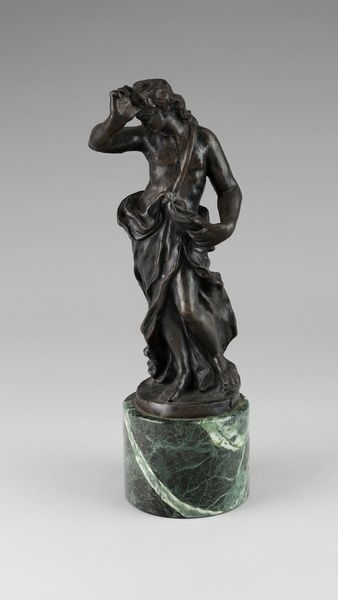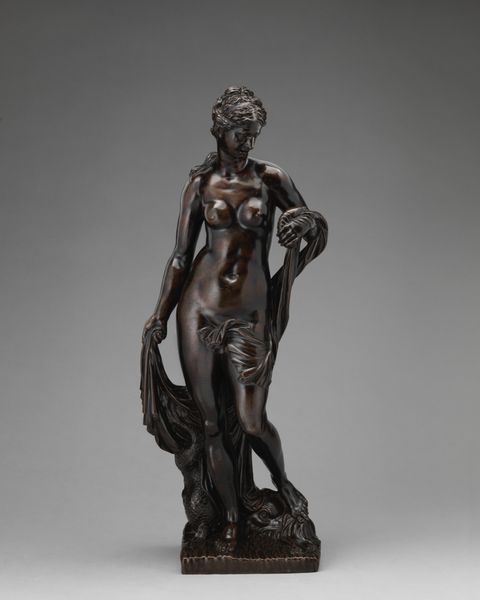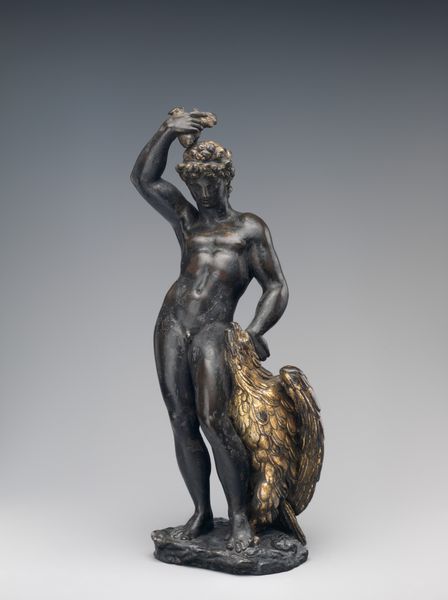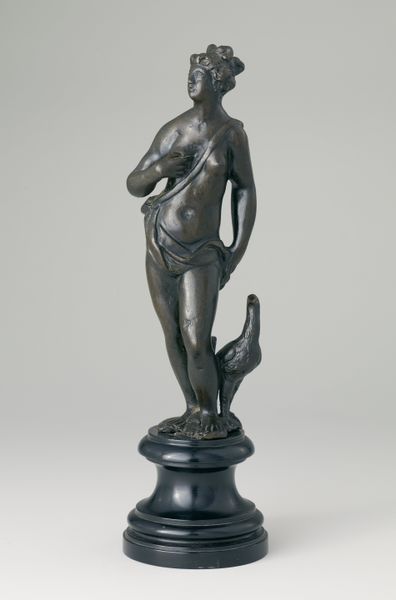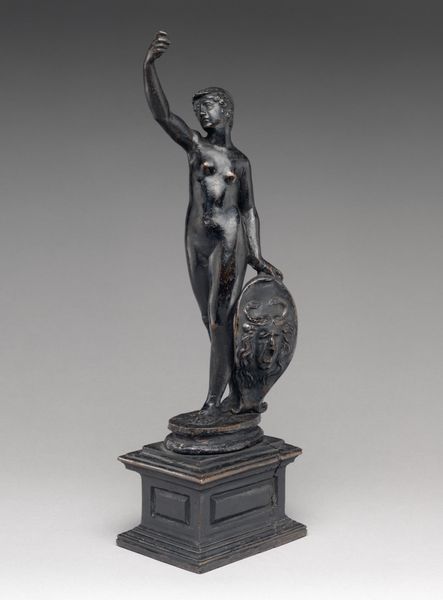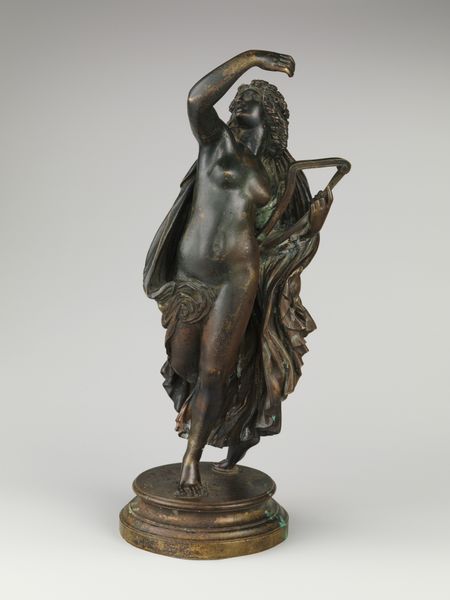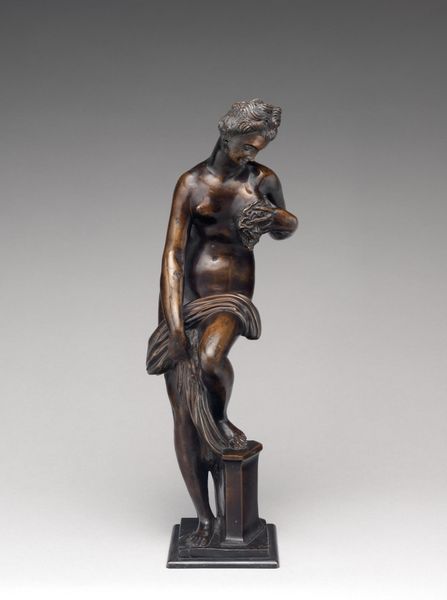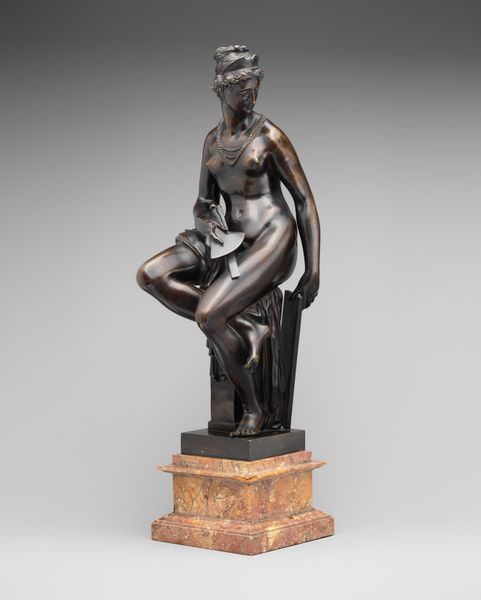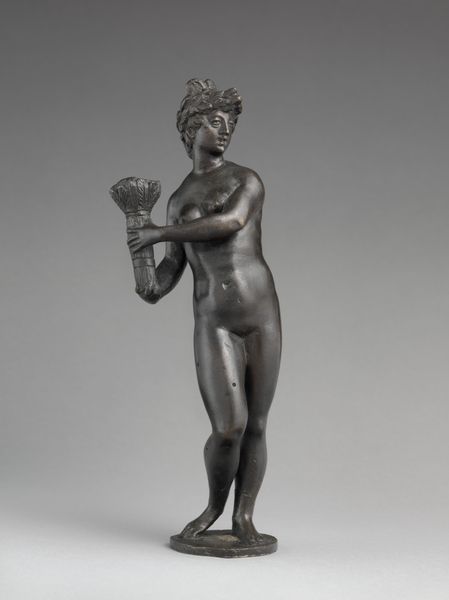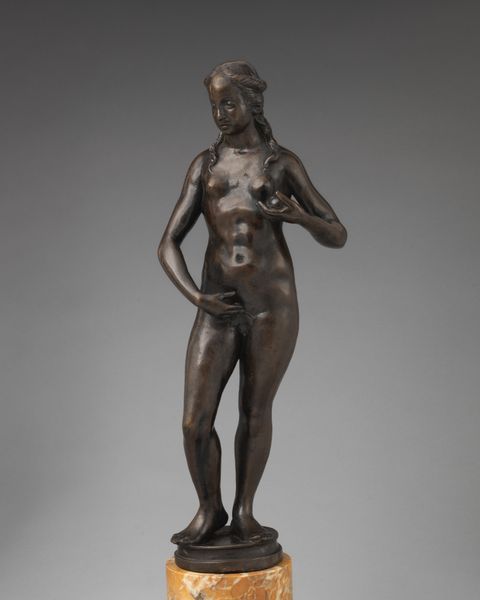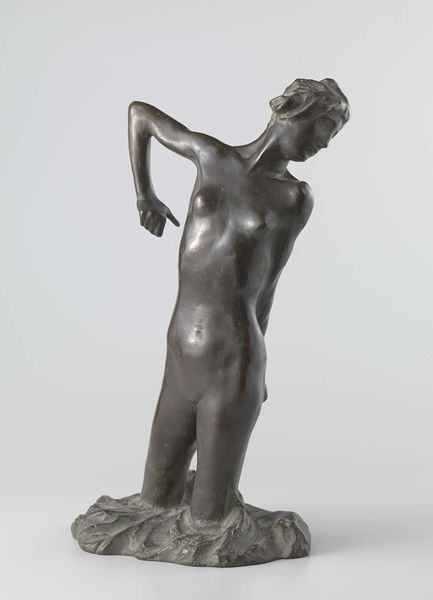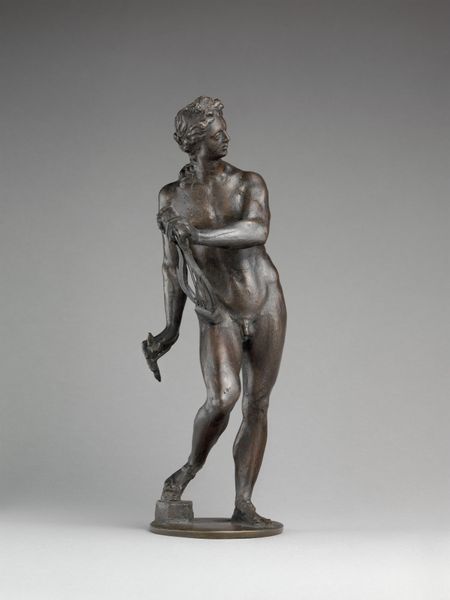
Juno and the peacock 16th century
0:00
0:00
bronze, sculpture
#
venetian-painting
#
sculpture
#
bronze
#
figuration
#
11_renaissance
#
sculpture
#
decorative-art
Dimensions: Overall (confirmed): 13 1/4 × 4 1/2 × 3 3/4 in. (33.7 × 11.4 × 9.5 cm)
Copyright: Public Domain
Here is the audio guide script about Juno and the peacock: Alessandro Vittoria crafted this bronze sculpture of Juno, the Roman goddess, sometime before 1608. Its vertical composition immediately draws the eye upwards, accentuating Juno’s elongated form and graceful posture. Note how the artist plays with the textures of the bronze to differentiate between Juno’s smooth skin, the flowing drapery, and the rough feathers of the peacock. The contrast invites a tactile exploration of the artwork, albeit a mental one. The goddess’s serene expression and the gentle curve of her body introduce a psychological dimension. Her hand rests demurely on her chest, which imbues the sculpture with a sense of modesty. The peacock isn’t merely an attribute; it serves as a formal element balancing Juno’s figure, creating a visual dialogue that invites interpretation. The sculpture exists as a carefully constructed arrangement of forms, textures, and gestures. It is not merely a representation but an active participant in the ongoing discourse of art history.
Comments
No comments
Be the first to comment and join the conversation on the ultimate creative platform.
